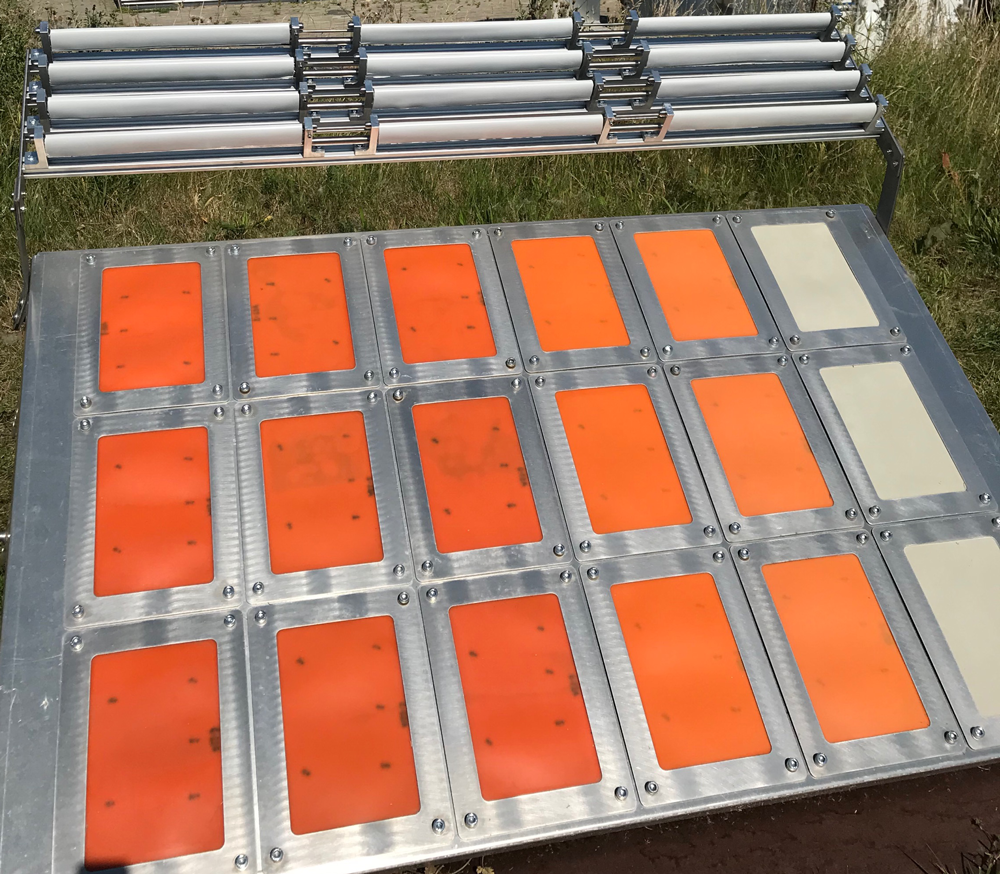Wind turbines all over the world are exposed to UV radiation – regardless of whether they are installed in a cold or warm climate. As temperatures do not affect UV radiation levels, all turbines and components globally are targets of the silent attacker, UV rays.
How does UV impact the materials and what are the signs of UV exposure?
Similar to rainfall, UV also has a linear impact on the surface degradation of the materials used on wind turbines (e.g., leading edge protection solutions or transport interfaces).
The material changes color as it gets exposed to UV. But you will also see that the surface will become “crisp” (i.e., more brittle). This is because UV breaks up the chemical bonds in the material, which changes its mechanical properties.
When the surface is crisp, you will eventually see microcracks developing. UV itself will not cause these cracks. But a brittle surface is weak, and therefore under mechanical load (e.g., weight or rain drops), such a surface is more prone to developing microcracks. Microcracks will evolve into more visible cracks, leading to the loss of friction or the removal of the protective layer. This process will therefore eventually erode the material.
It is important to note that UV will only act on the surface on the material. What happens under the surface is a result of subsequent mechanical load.
What does Polytech do to protect materials against UV?
It all starts with collecting data. Our material engineers work with three main data sources for UV exposure:
- Satellite data: we use weather data from NASA to map the UV exposure globally
- Laboratory tests: we carry out UV and light exposure tests on the materials in our accredited test center in Bramming, Denmark
- Field tests: we set up material stations in Denmark, China, Mexico, USA, and India to study long-term UV exposure
After the lab and field tests, we use infrared spectroscopy to analyze and quantify changes in the material. We then correlate our lab data with field and satellite data to understand the real UV exposure and to be able to scale up our lab tests to real life examples.
We use these data to continuously improve and adjust our materials, ensuring full protection against UV as well as in our lifetime calculations when we predict the durability of the materials.

The future
Further data collection and ongoing developments in materials science and engineering bring a lot of potential in the future.
We will be able to develop solutions that are more site-specific and fit for the purpose, ensuring the right UV protection for the individual sites.
Using UV-stable materials could also become important in product development as these prevent materials changing color and the surface becoming crisp. Such UV-stable materials, however, would need to be thoroughly tested to ensure that the end products’ durability and performance are not compromised.
Whatever the future brings, we are here to ensure that your Polytech solutions (whether it is ELLE® or transport interfaces) can withstand the silent attacks of the UV rays.
Want to know more?
If you are interested to hear more about our UV testing capabilities, reach out to our Test & Validation team at https://www.polytech.com/contact/.